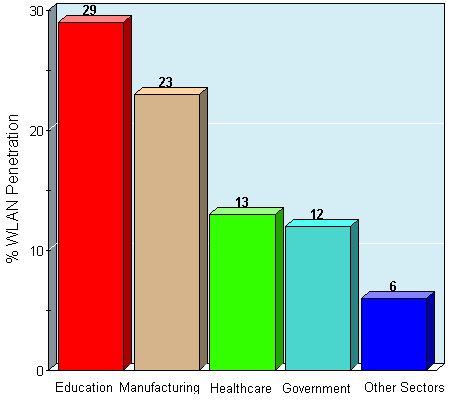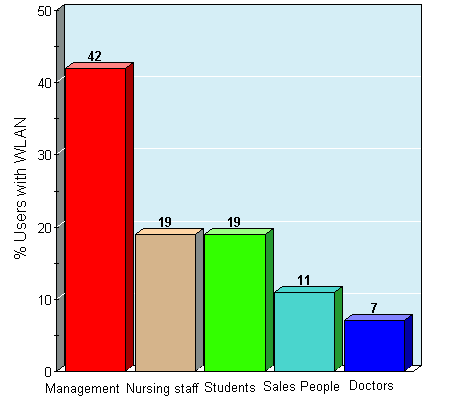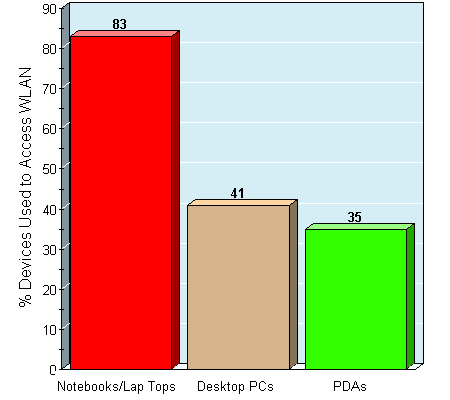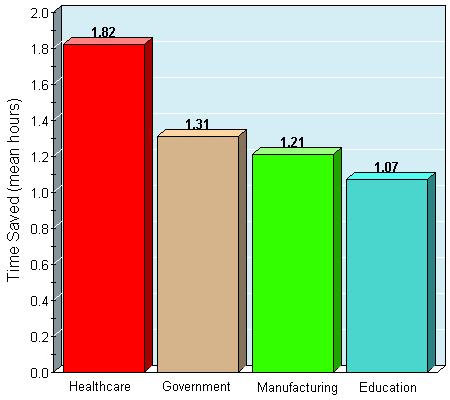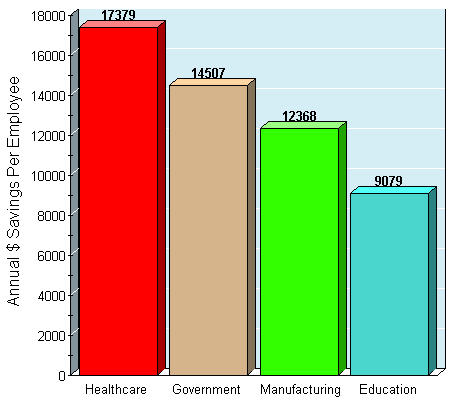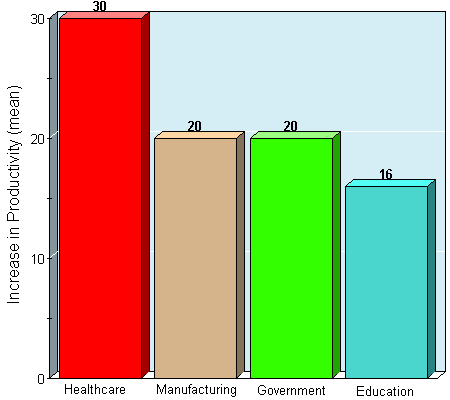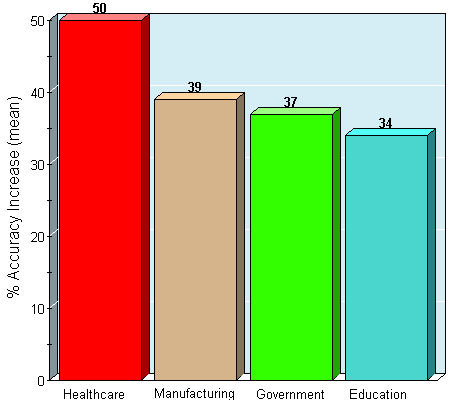 |
|
Healthcare is the big winner and Nursing is a major recipient of the benefits. SAN JOSE, Calif. Nov. 2003 Cisco Systems Inc. announced the results of a new study conducted by independent research firm NOP World Technology, which shows significant productivity gains and increasing financial returns to organizations adopting a policy of wider wireless local area network (LAN) deployment. Results from this current 2003 study demonstrate a rise in employee productivity, increased cost savings and other benefits. While wireless LANs [for healthcare organizations] have been postulated to represent a major area for potential growth, widespread deployment has yet to be realized. There remains a need to quantify the benefits offered by their implementation (including increased flexibility, productivity, and cost savings). This research has been designed to provide the required substantiation. WLAN Penetration Education has the highest WLAN penetration (at 29%), followed by manufacturing (23%), healthcare (13%) and government sectors (12%). Beyond these, most other sectors tend to be implementing WLANs at a relatively laggard pace (with an average 6% penetration).
Users with WLAN Access The users with most widespread access to WLANs include Senior Management (at 42%), followed by Nursing Staff (19%), Students (from all disciplines, at 19%), Salespersons (11%) trailed by Doctors with only 7% access.
Devices Used to Access WLAN Overall, over 80% of organizations with WLANS are using notebook or laptop computers as the primary network access platform. Notebooks are followed by desktops (at 41%) and PDAs or handheld computers (at 35% - a 4% rise, from 2001). This growth in PDA usage is being driven by sectors requiring high levels of mobility, e.g. Healthcare Organizations and logistics/distribution environments in Manufacturing Organizations. Results from the study indicate that 50% of PDA users who access the WLAN are using devices (such as the Palm Tungsten C) with embedded 802.11 technology.
Time Saved (mean hours) Respondents were asked how much time is saved per work day using the wireless LAN versus the wired LAN. The results indicate a significant amount of time saved for all employees.However time savings are greatest in the Healthcare, where the average time savings is almost 2 hours.
Annual $ Savings Per Employee The annual cost savings was estimated at more than $13K per user. The greatest savings experienced is in the Healthcare, with per employee savings estimated at over $17K.
% Increase in Productivity (mean) This significant time savings is estimated to, on average, represent 17% of user working days (based on an eight-hour day). This relates almost directly to productivity – on average, end users say they are more productive on the wireless LAN versus the wired LAN. Healthcare experienced the greatest gain in productivity, with an average 30% increase in employee productivity as a result of wireless LAN use.
Accuracy Increase (mean) Among those that feel that the implementation of wireless LANs makes everyday tasks more accurate, it is estimated that individuals are as much as 41% more accurate on average. Although this figure is a respondent estimate of increased accuracy, it is significant in its size; 40% increased accuracy among individual users has the potential to save a lot of time and effort across an institution. Healthcare staff again lead the field here – respondents say they are almost 50% more accurate in their everyday tasks.
Although the positive benefits of wireless LANs in healthcare may appear to be logical – even commonsense– ( Although only 13% of healthcare institutions currently deploy WLANs, Healthcare is reaping a disproportionately high percentage of the benefits). Work still needs to be done in educating the healthcare industry in general on the benefits of WLAN technology.
|
|||||
